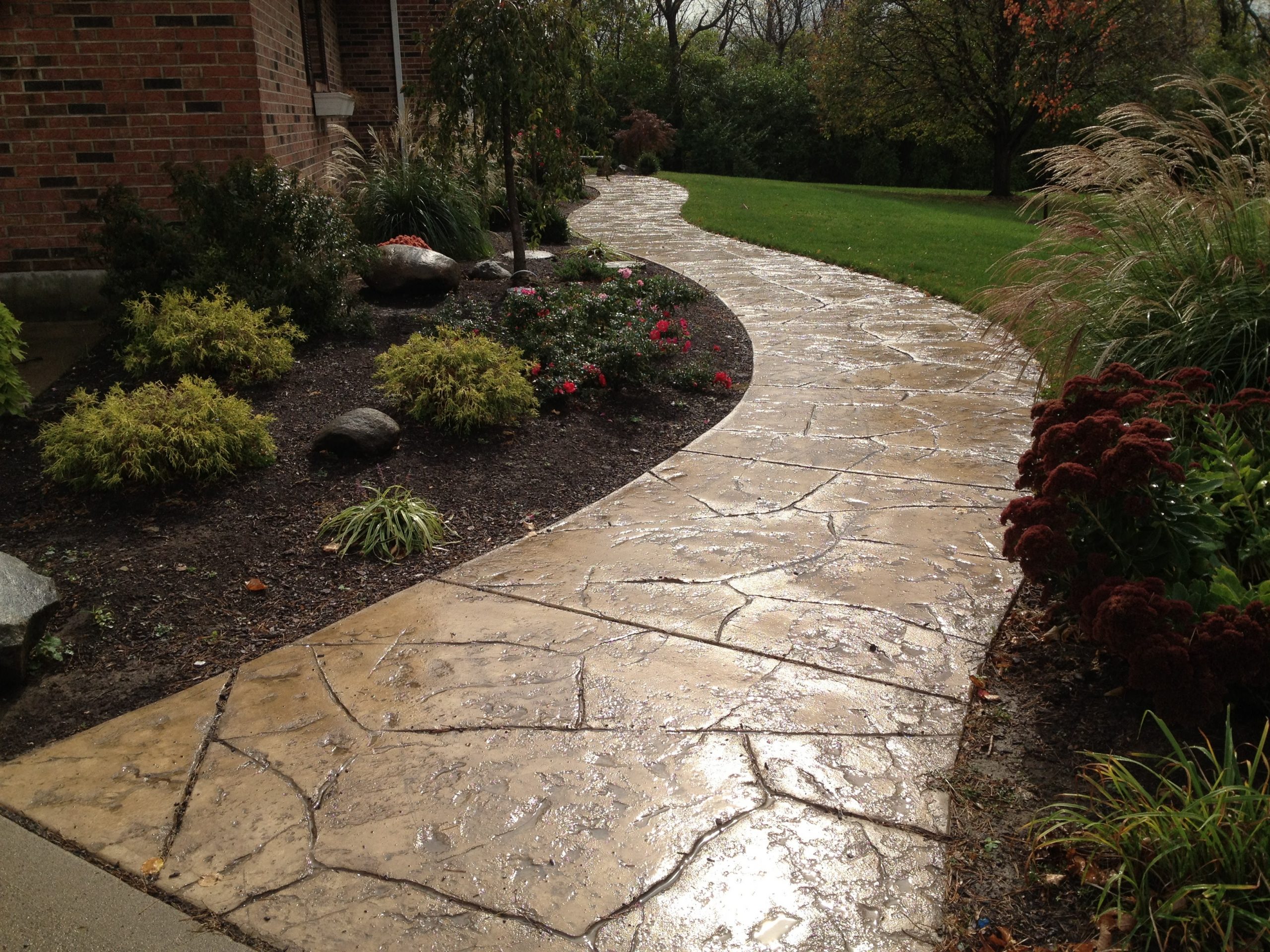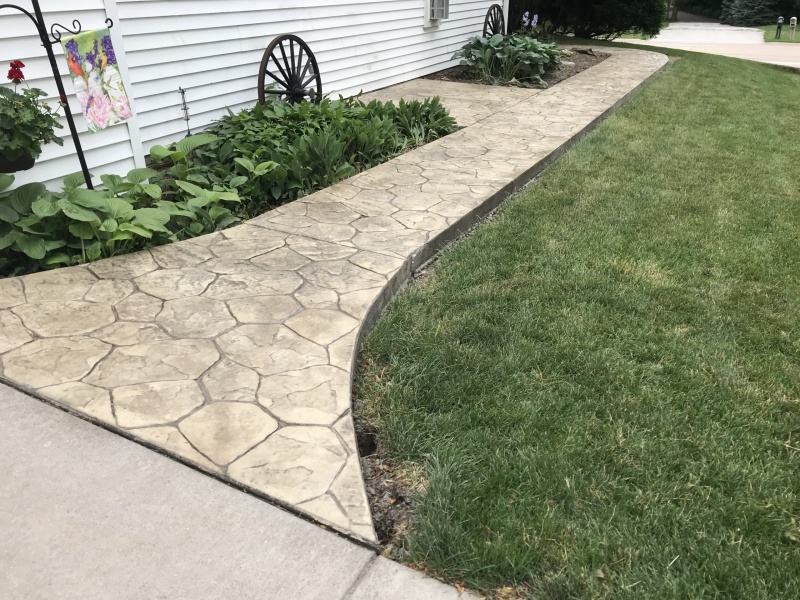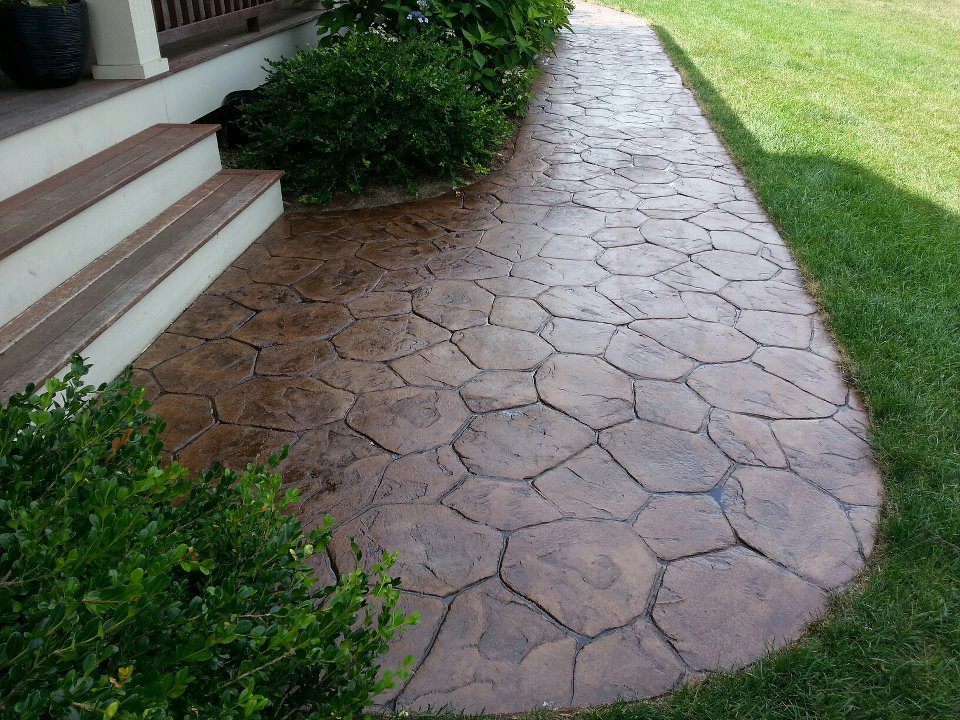When it comes to enhancing the aesthetic appeal of your property, few elements can compare to a well-designed decorative concrete walkway. This versatile feature not only improves the functionality of your outdoor spaces but also dramatically increases curb appeal. In this comprehensive guide, we’ll dive deep into the world of decorative concrete walkways, sharing insights from my personal experiences, design tips, maintenance advice, and more.
What is a Decorative Concrete Walkway?
A decorative concrete walkway is an attractive pathway constructed using various concrete techniques, finishes, and colors. Unlike standard concrete walkways, decorative versions are designed to mimic natural materials, like stone or brick, and can significantly enhance the visual appeal of your outdoor spaces.
Types of Decorative Concrete Techniques
- Stamped Concrete: This technique involves stamping patterns into freshly poured concrete, allowing for the imitation of various materials.
- Colored Concrete: You can add color to concrete using dyes or pigments for a more vibrant look.
- Exposed Aggregate: This method reveals the small stones in the concrete mix, creating a textured surface.
- Concrete Staining: Applying a stain to the surface of existing concrete can also create a decorative effect.
Benefits of Decorative Concrete Walkways
Decorative concrete walkways offer numerous advantages that extend beyond aesthetics. Here’s a look at some of the key benefits:
- Durability: Concrete is known for its strength and longevity, making it an excellent choice for walkways that endure foot traffic and weather elements.
- Low Maintenance: Unlike natural stone or wood, decorative concrete requires minimal upkeep. A simple wash and occasional sealing can keep it looking new.
- Versatile Design Options: The array of colors, patterns, and finishes allows for unlimited design possibilities.
- Cost-Effectiveness: While the initial investment may vary, the long-term benefits and durability often make decorative concrete a cost-effective choice over time.

Comparing Decorative Concrete Walkways to Other Materials
| Material | Cost | Durability | Maintenance | Aesthetic Appeal |
|---|---|---|---|---|
| Decorative Concrete | Medium | High | Low | High |
| Brick | High | Medium | Medium | Very High |
| Natural Stone | High | High | Medium | Very High |
| Asphalt | Low | Medium | High | Low |
Design Ideas for Your Decorative Concrete Walkway
Creating a visually appealing walkway involves thoughtful design choices. Here are some ideas to inspire you:

1. Curved Walkways
Curved pathways provide a natural flow to your garden or yard. Use stamped concrete to create a winding effect that mimics the look of cobblestones.
2. Geometric Patterns
For a modern look, consider geometric patterns. Combining different colors and finishes can create a unique and eye-catching design.

3. Integrating Landscaping
Incorporate plants and flowers along your walkway to enhance the overall look. Use exposed aggregate concrete to add texture and interest.
4. Lighting Features
Add solar lights or embedded LED lights along the edges of your walkway for safety and ambiance during evening hours.

Installation Process of a Decorative Concrete Walkway
The installation of a decorative concrete walkway may seem daunting, but with the right approach, it can be a rewarding DIY project. Here’s a step-by-step guide:
Step 1: Planning and Design
Begin by measuring the area and sketching your design. Consider factors like foot traffic and the overall landscape.

Step 2: Gathering Materials
You will need concrete, forms, reinforcement (like rebar or wire mesh), coloring agents, and sealers.
Step 3: Preparing the Site
Clear the area of any debris, grass, or soil. Dig out the pathway to the desired depth, typically 4 to 6 inches.

Step 4: Setting Up Forms
Install wooden or metal forms to hold the concrete in place while it sets. Ensure they are level and securely in place.
Step 5: Pouring the Concrete
Mix the concrete according to the instructions and pour it into the forms. Use a hoe or shovel to spread it evenly.
Step 6: Adding Decorative Finish
While the concrete is still wet, you can add stamps or colors. If using stains, apply them now for the best results.
Step 7: Curing and Sealing
Allow the concrete to cure as per the manufacturer’s instructions. Once fully cured, apply a sealant to protect your walkway.
Maintenance of Decorative Concrete Walkways
To keep your decorative concrete walkway in top shape, regular maintenance is key. Here are some essential tips:
Routine Cleaning
Wash your walkway with a pressure washer or a hose and soap to remove dirt and debris. Make this a seasonal routine to prevent buildup.
Sealing
Reapply sealant every 1-3 years, depending on your location and foot traffic. This helps protect the surface from stains and weather damage.
Repairing Cracks
If you notice any cracks, fill them promptly with a suitable concrete repair product to prevent further damage.
Cost Considerations for Decorative Concrete Walkways
The cost of installing a decorative concrete walkway can vary significantly based on several factors:
- Size of the Walkway: Larger walkways will naturally require more materials and labor.
- Complexity of Design: Intricate patterns or custom features will increase costs.
- Location: Prices may vary by region and the availability of concrete services.
Average Price Ranges
| Design Type | Price per Square Foot |
|---|---|
| Basic Stamped Concrete | $8 – $12 |
| Colored Concrete | $7 – $10 |
| Exposed Aggregate | $10 – $15 |
| Custom Designs | $12 – $20+ |
Personal Experiences and Recommendations
In my own backyard, I decided to install a decorative concrete walkway to connect my garden to the patio. I opted for a stamped concrete design with a slate texture in a rich charcoal color. It took a weekend to complete, but the results were worth every minute.
Not only does my walkway add charm to my outdoors, but it also stands up to the Midwest winters without any significant wear or tear. I recommend considering your local climate when selecting your materials and sealants.
FAQs About Decorative Concrete Walkways
What is the best type of concrete for outdoor walkways?
For outdoor walkways, stamped concrete and exposed aggregate are popular choices due to their aesthetic appeal and durability.
Can decorative concrete be poured over existing concrete?
Yes, decorative concrete can often be poured over existing concrete surfaces. However, ensure the old surface is structurally sound and free of cracks.
How long does decorative concrete last?
With proper maintenance, decorative concrete walkways can last 25 years or more, making them a worthwhile investment.
Is it necessary to seal decorative concrete?
Yes, sealing decorative concrete is essential to protect it from moisture and stains, ensuring longevity and maintaining appearance.
Can I do the installation myself?
While DIY installation is possible for those with some experience, hiring professionals may be a better choice if you’re unsure about the process.
Conclusion
Investing in a decorative concrete walkway can transform your outdoor areas into a stunning visual experience, enhancing both functionality and beauty. By carefully considering your design options, the installation process, and ongoing maintenance, you can create an inviting space that adds substantial value to your property. Whether you choose to tackle it as a DIY project or hire professionals, the end result will surely complement your home beautifully.